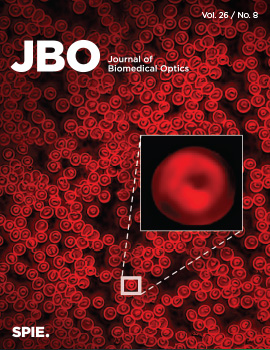Huiping Lin, Hanshen Chen, Luxi Weng, Jiaqi Shao, Jun Lin
Journal of Biomedical Optics, Vol. 26, Issue 08, 086007, (August 2021) https://doi.org/10.1117/1.JBO.26.8.086007

TOPICS: Cancer, Cameras, Visualization, Diagnostics, Detection and tracking algorithms, Performance modeling, Photography, Network architectures, Image classification, Evolutionary algorithms
Significance: Oral cancer is a quite common global health issue. Early diagnosis of cancerous and potentially malignant disorders in the oral cavity would significantly increase the survival rate of oral cancer. Previously reported smartphone-based images detection methods for oral cancer mainly focus on demonstrating the effectiveness of their methodology, yet it still lacks systematic study on how to improve the diagnosis accuracy on oral disease using hand-held smartphone photographic images.
Aim: We present an effective smartphone-based imaging diagnosis method, powered by a deep learning algorithm, to address the challenges of automatic detection of oral diseases.
Approach: We conducted a retrospective study. First, a simple yet effective centered rule image-capturing approach was proposed for collecting oral cavity images. Then, based on this method, a medium-sized oral dataset with five categories of diseases was created, and a resampling method was presented to alleviate the effect of image variability from hand-held smartphone cameras. Finally, a recent deep learning network (HRNet) was introduced to evaluate the performance of our method for oral cancer detection.
Results: The performance of the proposed method achieved a sensitivity of 83.0%, specificity of 96.6%, precision of 84.3%, and F1 of 83.6% on 455 test images. The proposed “center positioning” method was about 8% higher than that of a simulated “random positioning” method in terms of F1 score, the resampling method had additional 6% of performance improvement, and the introduced HRNet achieved slightly better performance than VGG16, ResNet50, and DenseNet169, with respect to the metrics of sensitivity, specificity, precision, and F1.
Conclusions: Capturing oral images centered on the lesion, resampling the cases in training set, and using the HRNet can effectively improve the performance of deep learning algorithm on oral cancer detection. The smartphone-based imaging with deep learning method has good potential for primary oral cancer diagnosis.



 Receive Email Alerts
Receive Email Alerts